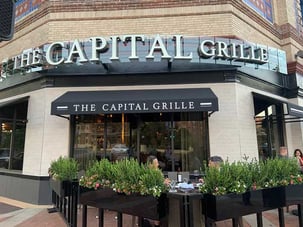3 min read
Every Drop Counts: Water Conservation Strategies for Commercial Buildings
Dialectic Engineering
Feb 12, 2024 1:20:37 PM
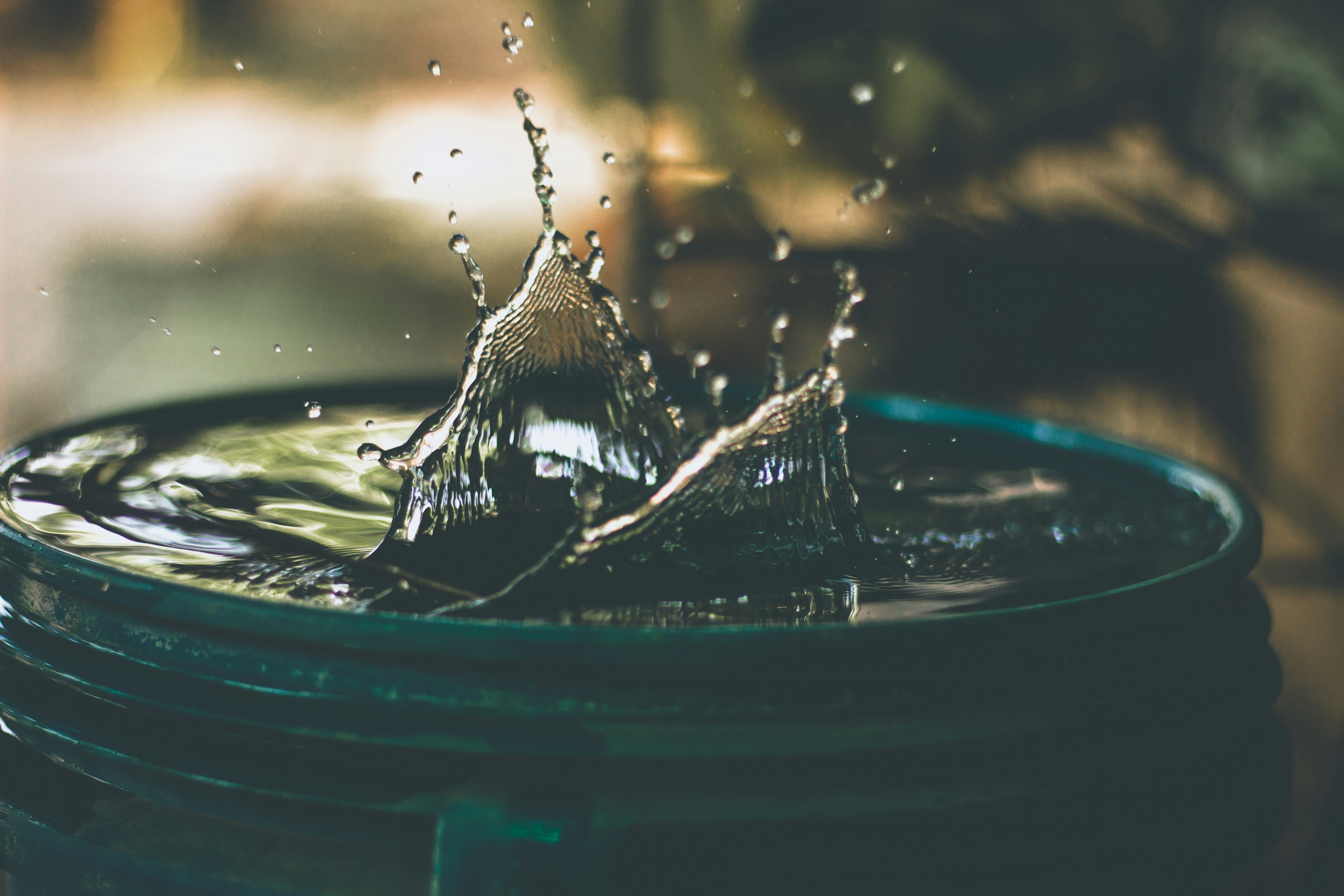
Imagine stepping into a bustling office tower. Lights shine, computers hum, and coffee machines bubble away. But behind the scenes, another essential resource flows continuously: water. Commercial buildings are notorious for their high water consumption, often due to outdated fixtures, inefficient practices, and lack of awareness.
However, a shift is underway. Savvy facility managers, office managers, and commercial developers are recognizing the crucial role of water conservation, not just for environmental sustainability, but also for significant cost savings and increased building value.
Understanding Water Usage and Waste in Commercial Buildings
Assessing Water Usage
The first step towards water conservation in a commercial building is understanding where water is being used and wasted. A water audit can pinpoint areas of excessive consumption and waste, such as leaky faucets, inefficient toilets, and poorly maintained landscape irrigation systems. By analyzing water bills and meter readings, you can identify peak usage times and target specific areas for improvement.
The Financial Impact
Excessive water use translates directly to higher utility bills that translate into spending more money. In fact, research suggests that commercial buildings can reduce water costs by 20-50% through effective conservation measures. These savings can be reinvested in building upgrades, employee benefits, or even tenant attraction.
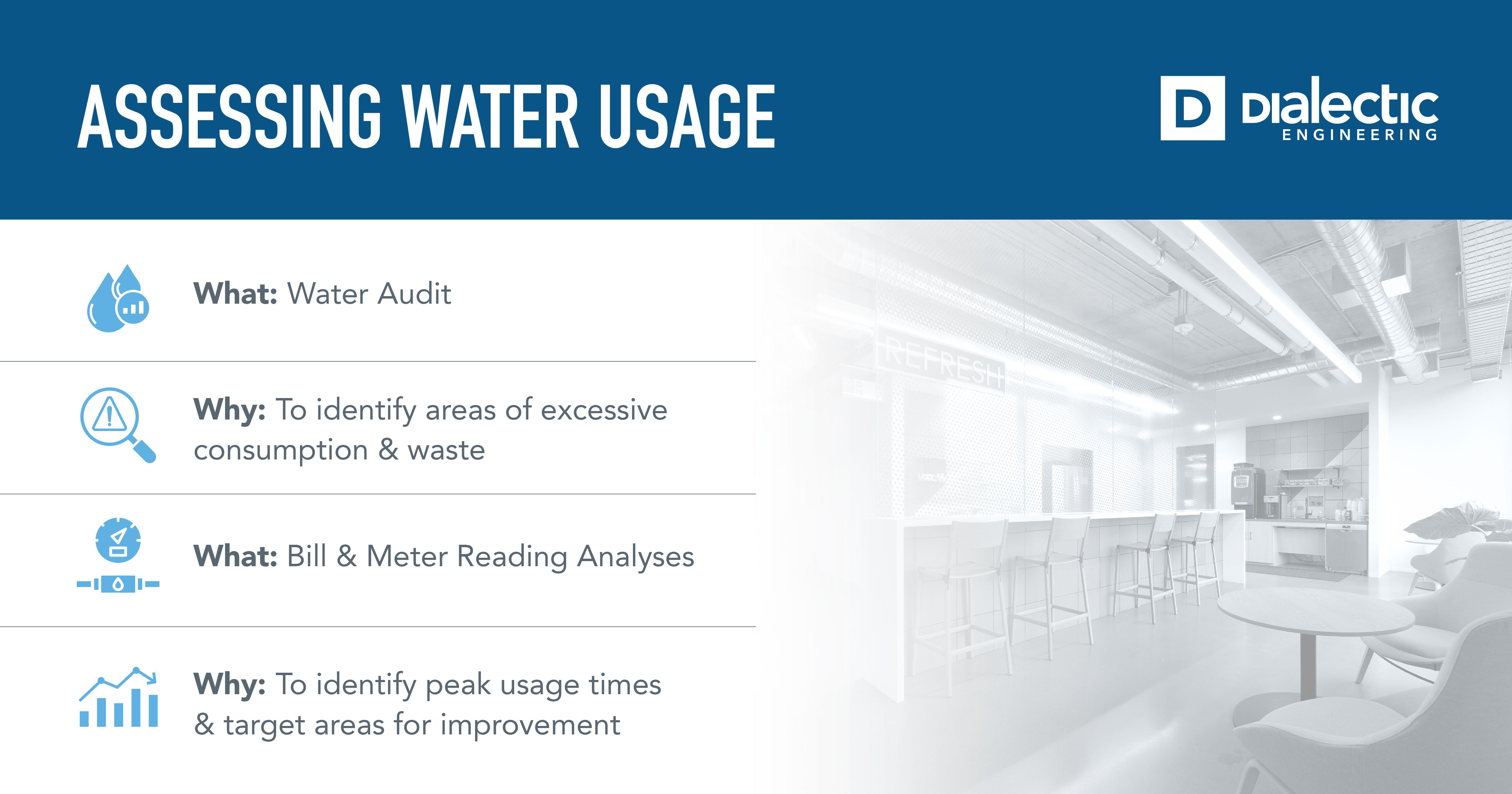
Key Water-Saving Fixtures and Amenities
Water Usage in Restrooms and Kitchens with Low-Flow Plumbing Fixtures
Replacing old toilets, faucets, and urinals with low-flow models can be a game-changer. Modern low-flow and water-efficient fixtures can reduce water usage by up to 50% without compromising performance. Consider WaterSense-labeled fixtures, certified by the EPA to meet strict water efficiency standards.
Sensor-Based Faucets and Toilets
When set up correctly, sensor-activated faucets and toilets eliminate unnecessary water waste by only dispensing water when needed. These innovative, water-efficient fixtures are not only hygienic but also can reduce water consumption by as much as 70% compared to manual options. However, it’s important to pay close attention to setup – some toilet flush valve sensors are so sensitive that they flush multiple times during use – the opposite of the intended water conservation goal.
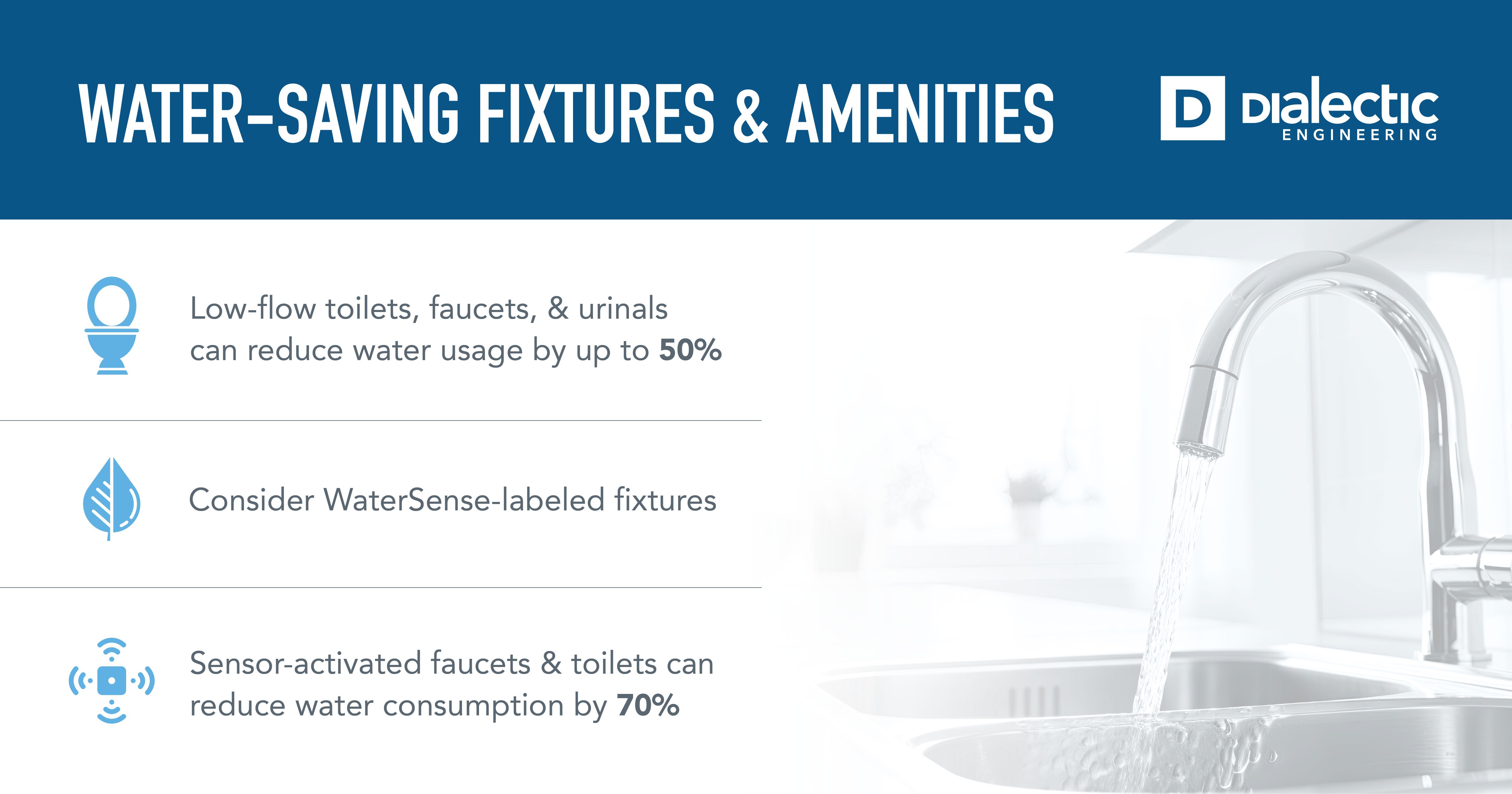
Greywater Recycling Systems
Greywater refers to slightly used water from sinks, showers, and washing machines. Instead of sending it down the drain, greywater recycling systems treat and reuse it for non-potable purposes like landscape irrigation, toilet flushing, and cooling towers. This can significantly reduce reliance on municipal water sources and contribute to sustainable building practices.
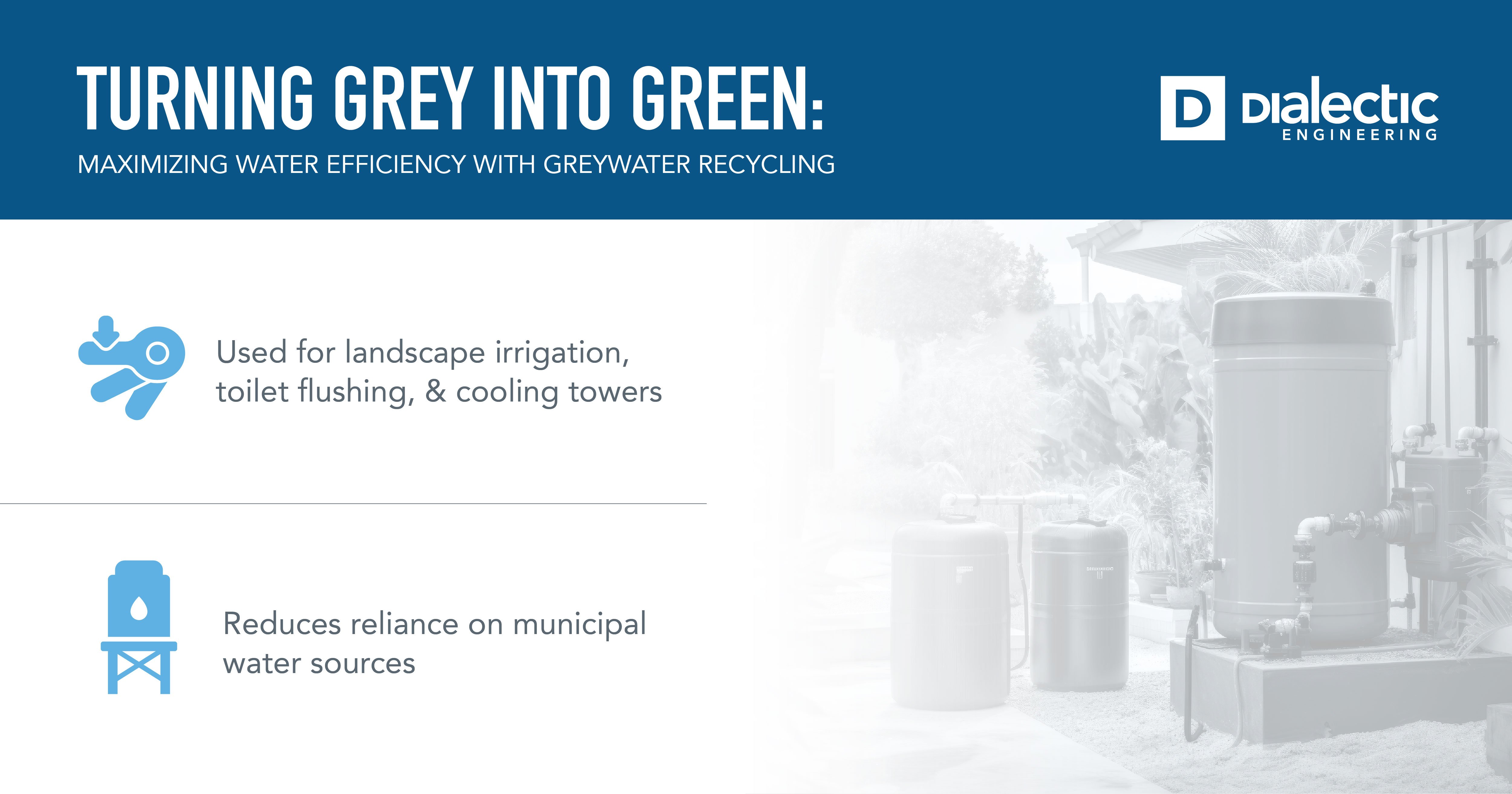
Water-Efficient Landscaping
The thirsty lawns and decorative fountains surrounding commercial buildings often consume a disproportionate amount of water. Choosing drought-resistant plants, implementing xeriscaping principles, and installing efficient irrigation systems can drastically reduce outdoor water usage, making the landscaping water-efficient and sustainable.
Drip Irrigation Systems
Drip irrigation delivers water directly to plant roots, minimizing evaporation and runoff. This targeted and precision watering method can decrease water consumption by up to 50% compared to traditional sprinklers, making it a wise choice for commercial landscapes.
Rainwater Harvesting Systems: Harnessing Nature's Resource for Commercial Use
Rainwater harvesting systems collect rainwater from rooftops and store it for later use in non-potable applications like irrigation, toilet flushing, and car washing. This innovative approach can reduce dependence on municipal water and contribute to building resilience during droughts.
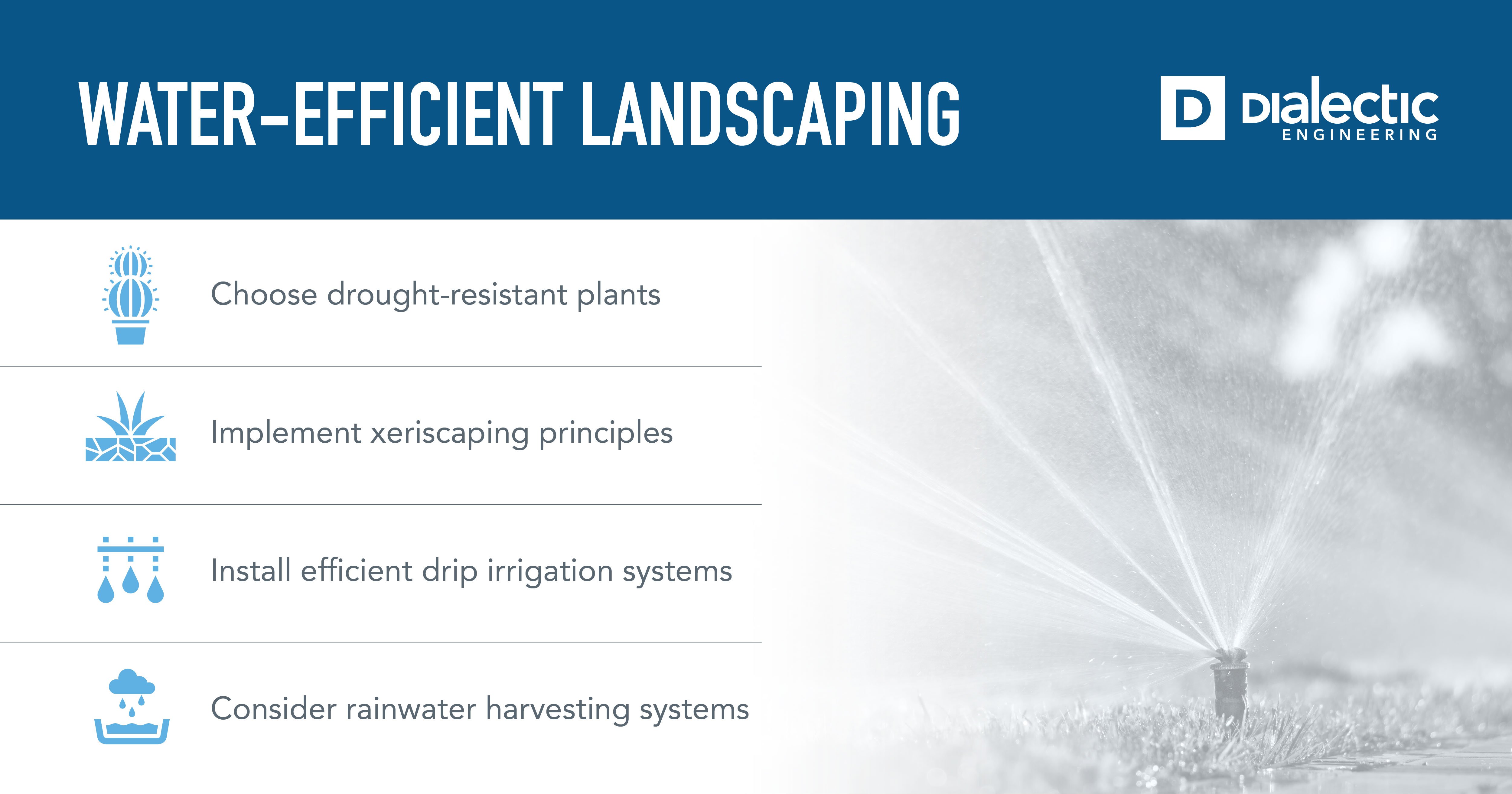
Water Leak Detection Systems
Even the smallest water leaks can lead to significant water waste and property damage over time. Implementing water leak detection systems can proactively identify and address leaks before they escalate, saving water and money in the long run.
Water-Efficient Appliances
In commercial buildings, where coffee machines gurgling and dishwashers humming create a symphony of activity, an often-overlooked resource flows continuously: water. However, a simple yet impactful solution lies in embracing water-efficient appliances.
Sustainable Choices in Office Spaces
Energy Star-certified dishwashers, ice machines, and even coffee makers can significantly reduce water consumption in breakrooms and kitchens. Choosing these water-efficient appliances can be a simple yet impactful way to be sustainable and conserve resources within commercial buildings.
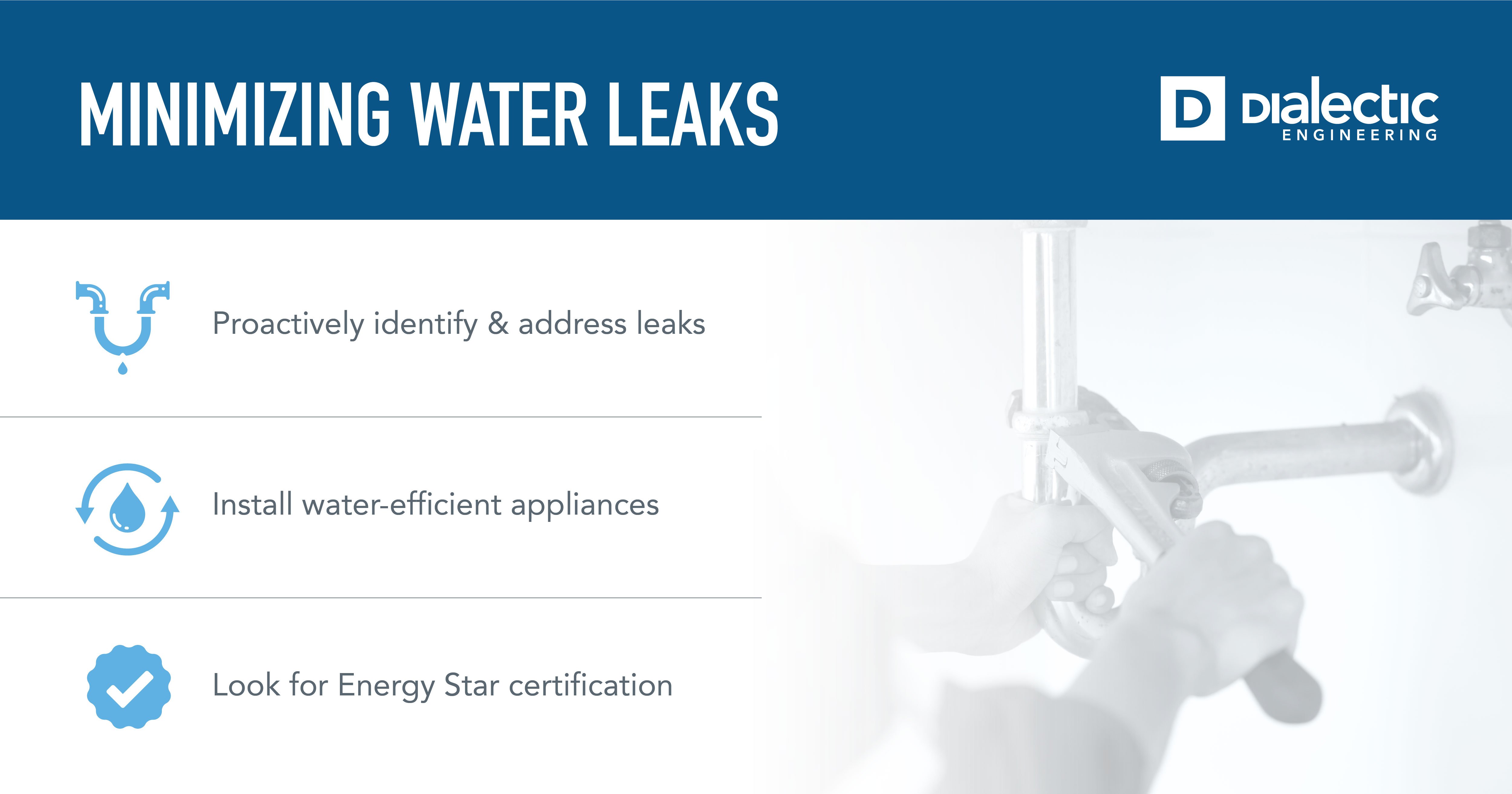
Educational Water Conservation Programs: Fostering a Culture of Conservation
Awareness is key to long-term success in any water conservation initiative. Implementing educational programs for employees and tenants can raise awareness about responsible water usage and encourage participation in conservation efforts. These programs can range from simple signage and infographics to engaging workshops and competitions and help foster a culture of conservation.
By embracing water conservation strategies, commercial buildings can achieve a win-win situation. Not only will they be contributing to environmental sustainability by reducing the water footprint, but they will also see significant cost savings on water bills and potentially enhance building value through responsible resource management.
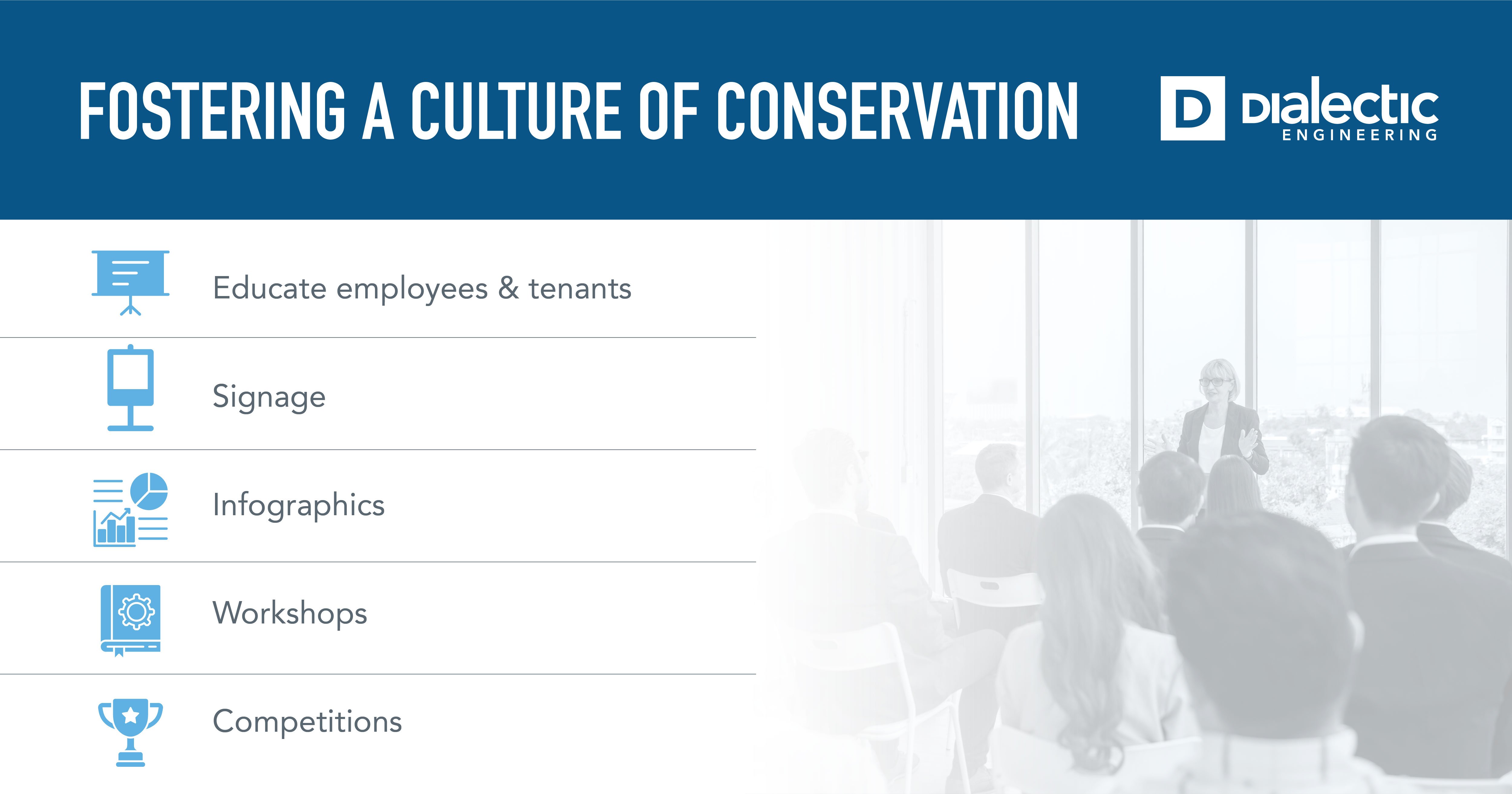
Work with Experienced Water Conservation Experts
Since 1988, Dialectic Engineering has practiced environmentally responsible design, helping clients balance code standards and ecological objectives. Our mechanical, electrical, and plumbing (MEP) engineers know sustainability is valuable for all projects, and today, we are MEP design leaders in sustainability. You deserve to work with a firm that knows your sustainability needs and will ensure you meet your goals.
Want more insights? Check out our white paper:The High Energy Costs of NOT Conserving Water
So, whether you're a facility manager, an office manager, or a commercial developer, remember: Every drop counts. Take the first step towards water conservation by contacting us today, and unlock a sustainable future with Dialectic Engineering.

